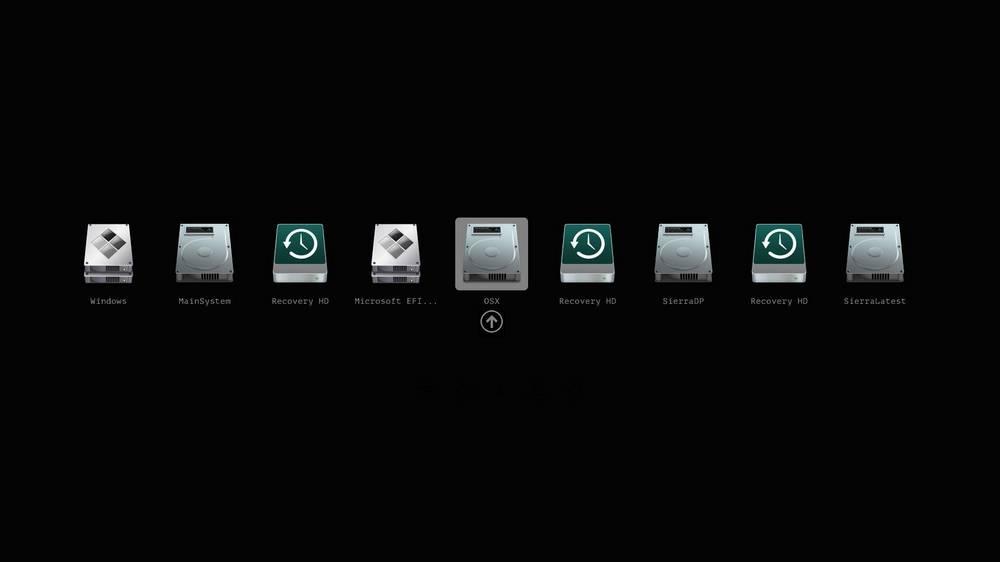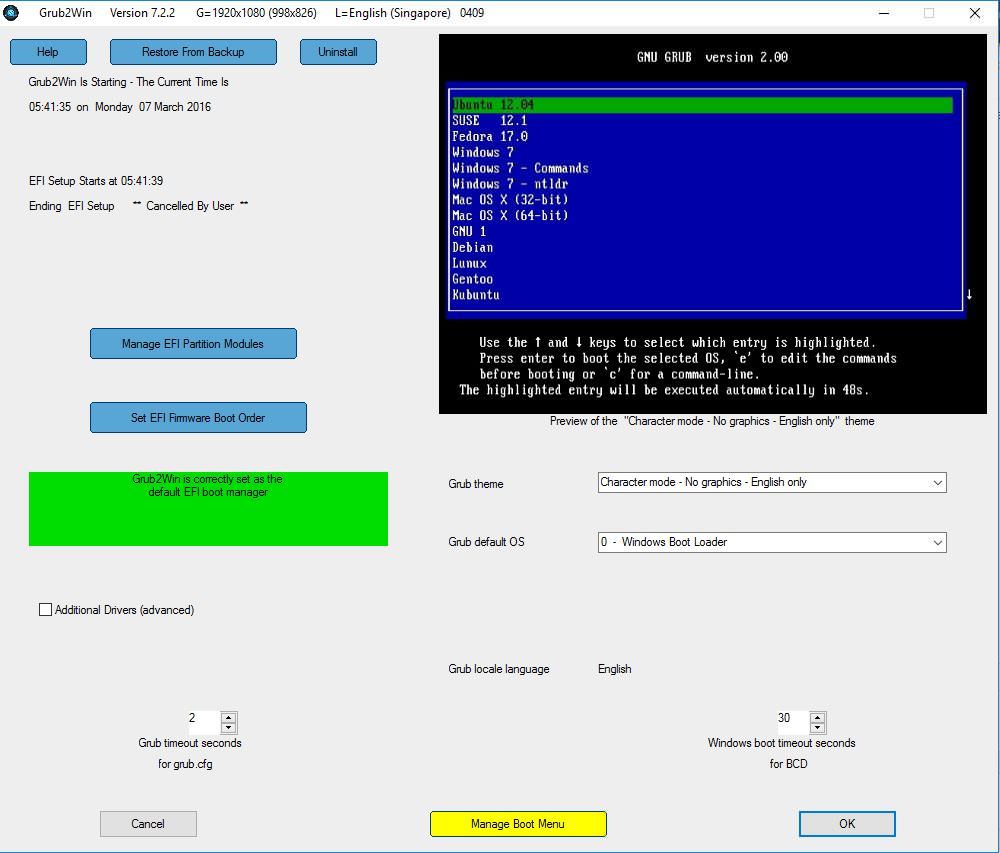

- CLOVER EFI BOOTLOADER MAJAVE HOW TO
- CLOVER EFI BOOTLOADER MAJAVE MAC OS X
- CLOVER EFI BOOTLOADER MAJAVE MAC OS
- CLOVER EFI BOOTLOADER MAJAVE INSTALL
- CLOVER EFI BOOTLOADER MAJAVE DRIVERS
Note: EFI is only tested on Mojave but should work with Catalina and might work on Big Sur. Voila you will be booted into MacOS, now you may setup your Hackintosh.

CLOVER EFI BOOTLOADER MAJAVE INSTALL
(It is suggested to install MacOS first if you are going to dual boot it with Windows) Let it boot, Create desired partition through disk utility APFS format. Boot Into USB to get installation started.Įverything is Predefined you do not need to make any changes in Clover.Ģ. Run Explorer++ as administrator replace clover files with H81i Clover filesģ. Assign letter to EFI USB partition so that windows can recognize it.ĥ. Download Explorer++ and Mini Tool partition wizardĤ. Set IGD to PEG if you are going to use RX580 otherwise IGD is fine.ģ. Enable Windows 8.1 feature, disable secure boot.ģ. In order to get the installation started you will have to configure biosĢ. This guide is meant for the following build
CLOVER EFI BOOTLOADER MAJAVE HOW TO

To do this, click on the "Mount EFI" button on the left column. To modify it, you first have to mount the EFI partition, which is usually hidden when you boot OS X. Your actual "ist" file will be on your computer's EFI partition. The home page of the app will display some number of seemingly identical files named "ist," with the exact number depending on how many hard drives your computer has. Once you've downloaded it, open up the Clover Configurator app (which comes in a ZIP file). So instead of editing the file directly, like we did with Chameleon/Chimera, we recommend that you download the free Clover Configurator app instead. However, Clover's file may be a little bit harder to work with, depending on your particular setup. Clover's settings rely on a similar text file called "ist." Traditionally, you could permanently enable certain boot flags by adding them to the text file "," which was essentially the settings file for Chameleon/Chimera. This process is also a bit more involved in Clover, compared to Chameleon/Chimera.
CLOVER EFI BOOTLOADER MAJAVE MAC OS
Once you've managed to boot into your Hackintosh, you'll probably want to make those boot flags permanent, so that they'll automatically be entered into the bootloader every time you start Mac OS X. How to use permanent boot flags on Clover If you need help finding the right boot flags for your Hackintosh, check out our list of common boot flags (this list is tailored for Chameleon/Chimera, but Clover supports many of the same flags). From here, return to the original Clover boot menu (you can press the "Esc" key on your keyboard to do this), and boot OS X again. Press your spacebar, and then you'll be able to start typing the necessary boot flags. free Plist Editor with some optional facilities for Clover UEFI boot loader.

CLOVER EFI BOOTLOADER MAJAVE DRIVERS
Adds the drivers AptioMemoryFix.efi and ApfsDriverLoader.efi to /EFI/CLOVER/drivers/UEFI/. Launch Clover Configurator, and select the Mount EFI option in the sidebar. To enter a temporary boot flag into Clover, first start your computer and wait until you reach the Clover bootloader menu, which will look something like this (aka the Unibeast menu, assuming you installed OS X that way): Installs Clover to the EFI Partition of the selected destination drive. In contrast, the process is slightly more involved with Clover. On Chameleon/Chimera, you could enter a temporary boot flag by simply typing it directly into your computer's bootloader menu. How to use temporary boot flags on Clover Unfortunately, using boot flags on Clover requires a slightly different technique than on Chameleon/Chimera (although most of the boot flags themselves remain the same). All Hackintosh installation methods for El Capitan, including tonymacx86's ever-popular Unibeast method, now use Clover. While we've already previously discussed how to use boot flags on the Chameleon and Chimera bootloaders, which were formally the two most popular bootloaders for PCs running Mac OS X, the release of OS X El Capitan has now shifted attention onto the new and upcoming Clover bootloader. The bootloader is the program that boots Mac OS X. For those of you who don't know, boot flags are "arguments" (pieces of data that you enter) to change the way that your bootloader runs.
CLOVER EFI BOOTLOADER MAJAVE MAC OS X
Starting up Mac OS X for the first time on your Hackintosh can be a very tricky process, which often requires you to set special boot options through the use of boot flags.


 0 kommentar(er)
0 kommentar(er)
